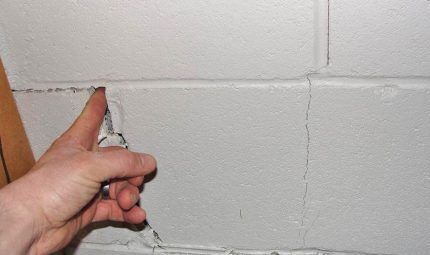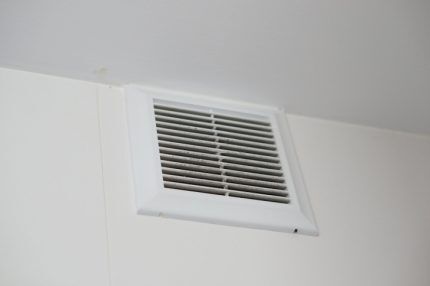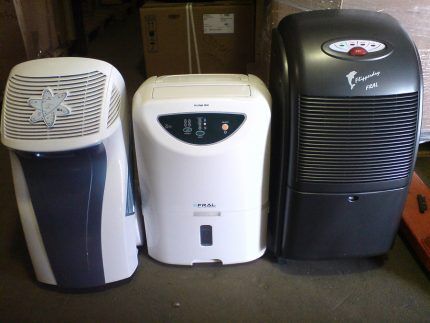The influence of air humidity on human health: what danger does excessively high or low humidity pose?
An indicator such as air humidity is of great importance for human health. Considering that any living organism consists of water, the effect of air humidity on human health is difficult to exaggerate.
Agree, have you also repeatedly noticed a deterioration in your health in a room that is too humid or too dry? And prolonged stay in rooms with high/low humidity can even lead to serious illnesses.
Next, we will tell you how to adjust the humidity level in rooms to a level that is optimal for life and health.
The content of the article:
Increased humidity - good or bad
Optimal indoor humidity level, its indicator is considered to be in the range of 30-60%. Deviation from the norm causes poor health and generally brings discomfort to everyone in the room.
Air humidity can be measured using special devices. It will be difficult to draw conclusions about the humidity level based purely on your own feelings.
High humidity is dangerous not only for humans. Furniture, books, clothes and shoes that are in the apartment suffer. For storing household items, a humidity level of 50% is considered normal, and for most indoor plants, a humidity level of 60% is ideal.
A humidity level reaching 70% is considered dangerous. With this level of moisture, furniture becomes unusable, and boots left in the closet until next season may lose their soles.

Thus, it becomes dangerous to breathe indoors, since mold spores entering the lungs can cause chronic colds or lead to pneumonia.
High humidity is especially dangerous for children and the elderly. So, if the moisture level in the apartment is not maintained, children will frighten their parents with constant illnesses. In older people, excessive environmental humidity leads to the development of rheumatism.
We talked in detail about how to deal with mold in an apartment in this material.
Reasons for increased humidity
The indoor humidity level may increase temporarily.
This is usually due to the following factors:
- placing an open aquarium in the room;
- frequent spraying or watering indoor plants;
- constant drying of large quantities of laundry directly indoors after washing;
- cooking for a large family without using a hood.
All of the above factors can indeed increase humidity, but not for long or only by a few tenths of a percent.
If the moisture level is steadily increasing or remains constantly high, despite eliminating temporary factors, it is worth looking for more global causes.
Reason 1 – faulty roof or walls in the house
This factor is easiest to identify. If water is pouring from the walls or ceiling or wet spots are visible on the finishing, then the cause is directly in the building.

After completing the repair of the walls and roof, it will be necessary to do the interior decoration, since all the walls inside the apartment are already affected by mold. To completely get rid of it, you will need to treat the walls before finishing. special solutions.
Reason 2 – thermal balance is disturbed
It is quite simple to identify this reason - if condensation constantly appears on the windows, then there is a clear temperature difference. A window may “cry” even with a temporary temperature difference, but if this phenomenon is observed systematically, then it’s time to pay attention to the problem.
This problem is related to such a physical concept as Dew point.

First you need to identify those walls of the apartment that are the coldest. Perhaps they have a crack that can be quickly repaired.
However, if the wall does not have any visible deformations, there may have been an error during design or construction - for example, the ceilings were too thin. In this case, you will need to insulate the wall, and the problem will go away on its own.
Reason 3 – faulty ventilation
Regardless of when the apartment was put into operation, there are likely to be ventilation holes in it, which are usually located under the ceiling. They are rectangles covered with a mesh and serve for the outflow of air, while the influx occurs through open windows and doors.

When one or both channels are clogged, the room becomes stuffy and high humidity. The reason for non-functional ventilation can be fallen leaves, dirt, branches, etc. caught in the air duct. Owners of private houses often face this problem.
To remove the blockage, you will need to call specialists to your home to clean the ventilation, or fix the problem yourself.
In apartment buildings, owners often seal up ventilation holes, cover them with household appliances or furniture, without thinking at all that the air exchange in the room will be disrupted.
The ventilation openings must not be covered. And for more efficient air exchange, you can install an exhaust fan, which is mounted directly into the ventilation shaft and speeds up the movement of air flows.
Additional remedies in the fight against dryness
Knowing what high air humidity is and what it threatens for households, I want to say goodbye to this scourge as soon as possible.
Having eliminated the cause of dampness, the apartment owner may find that the humidity level has not decreased.

However, it is worth considering that these remedies only work if the apartment owners managed to eliminate the cause of the high humidity.
Is dry air good for humans?
It would seem that so much effort has been put into “drying” the air, and here comes a new problem. It became too dry. This can also happen if no devices were used to eliminate dampness.It is very easy to determine if air is too dry - it will become difficult for household members to breathe, and indoor flowers will dry out, despite abundant watering.
Typically, this phenomenon occurs in winter, since cold air cannot hold as much moisture as warm air, and the operation of radiators aggravates the situation.
Regardless of what causes drought, low air humidity often leads to the following consequences:
- drying of the mucous membrane of the throat and nose, which is fraught with frequent respiratory diseases;
- noticeable dryness in the nose, irritation of the mucous membrane;
- dry body skin, peeling and redness;
- Statistical electricity accumulates in the apartment;
- Cracks appear on wooden furniture and interior items.
Increasing low humidity is much easier than eliminating dampness. The first thing you need to do is check the ventilation.
Regular ventilation can optimize the humidity level, but if this is not enough, you should use other methods.

The first group of products that will help cope with low humidity are completely free. Our grandmothers also used them. So, try placing bowls of water near the radiators. A similar method is to hang wet towels or sheets on radiators. The essence of this method is that the water, gradually evaporating, will saturate the air.
The next option is not to use electric clothes dryers and hang them exclusively on radiators. It is advisable to spin the wash at low speeds so that the items are as wet as possible.
The fastest method of increasing humidity is to spray the room with a spray bottle, paying special attention to the curtains. This method must be used with extreme caution, without damaging the wallpaper or getting it on the furniture.
If possible, you can purchase a professional humidifier, which will maintain an optimal humidity balance around the clock.
Conclusions and useful video on the topic
This video will talk about how to maintain an optimal level of humidity in a room:
Thus, any deviations in air humidity levels from the established norm have a detrimental effect on human health. High humidity leads to the appearance and development of mold on walls and furniture.
Too dry air can cause chronic diseases - allergies, bronchitis. Therefore, as soon as such a problem is discovered, you should immediately begin to eliminate it by identifying the root cause.
How do you normalize the humidity level in the room? You may know other ways to deal with excessively dry/humid indoor air. Share them with our readers. Leave your comments in the block below.



